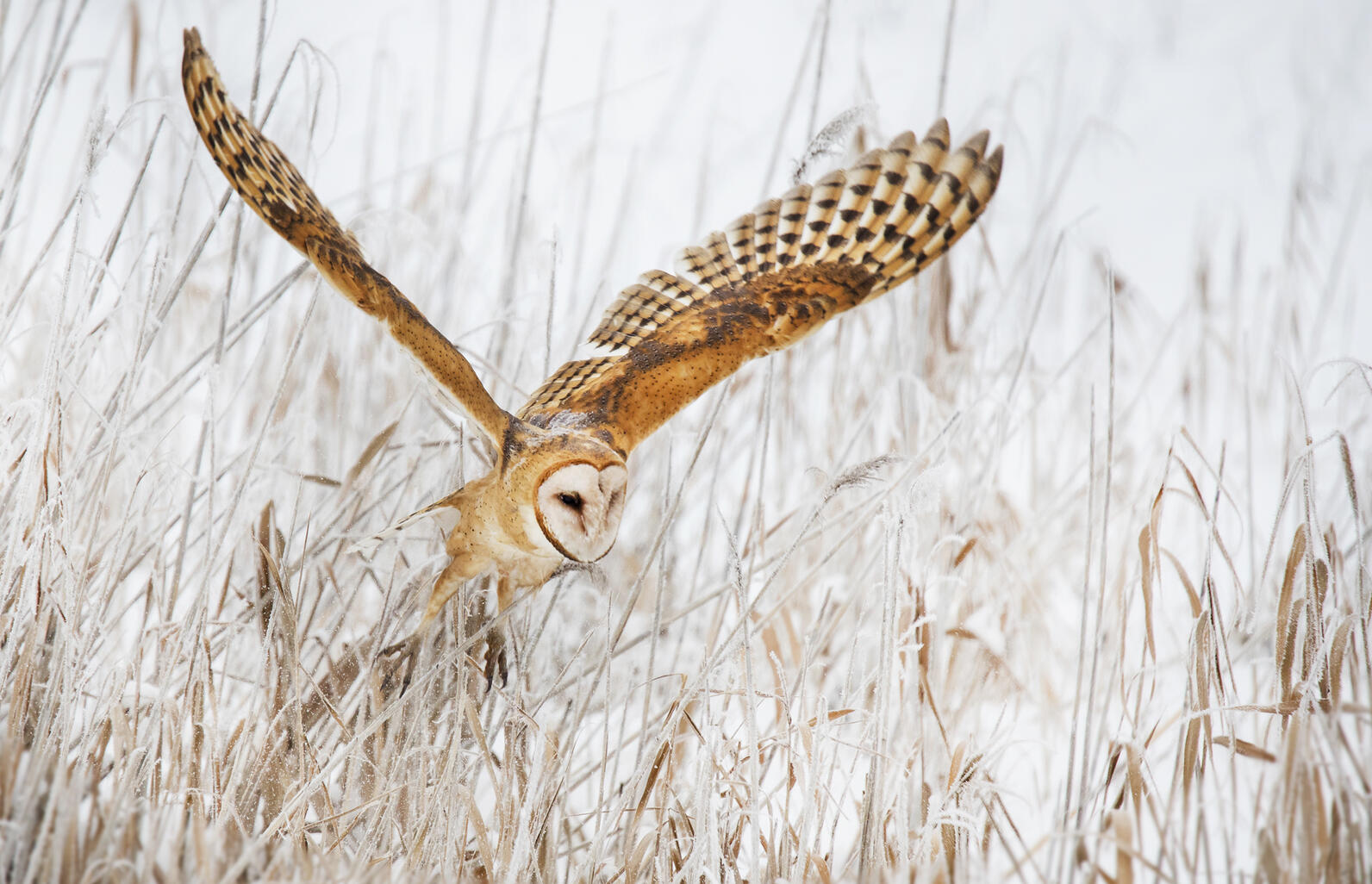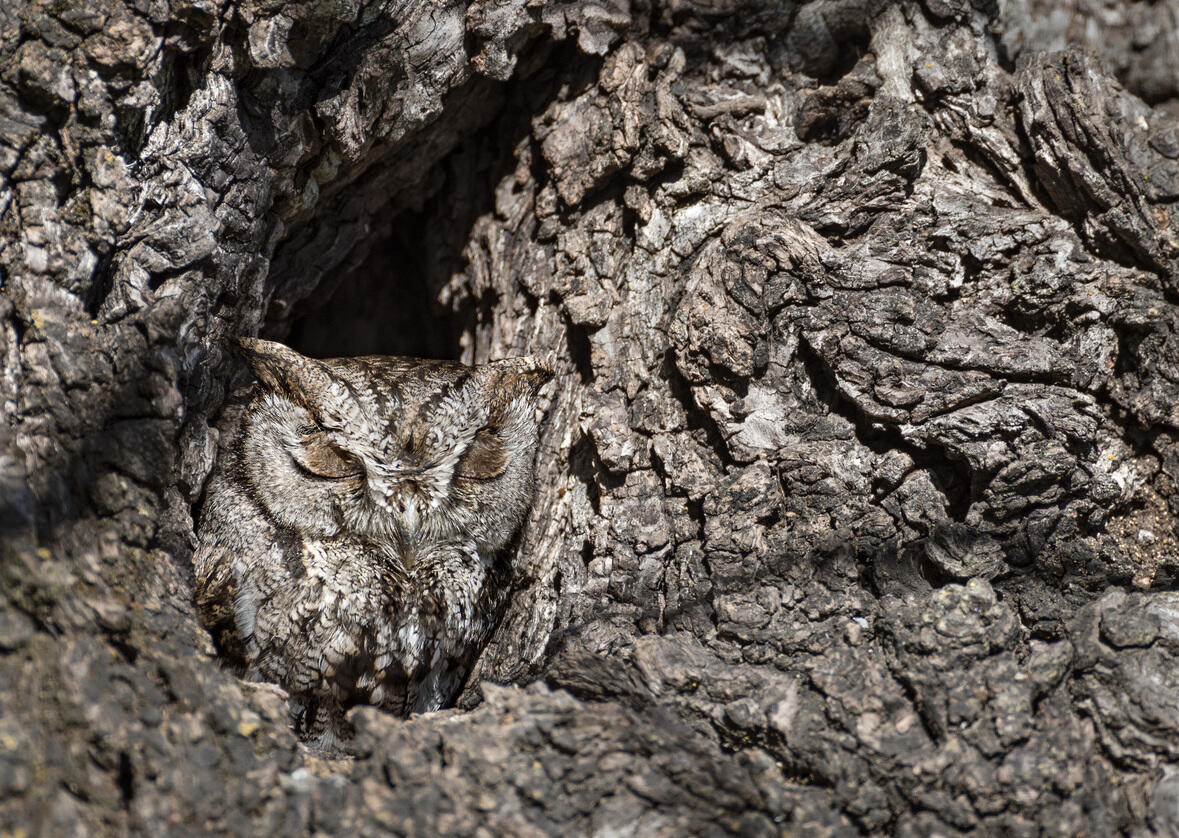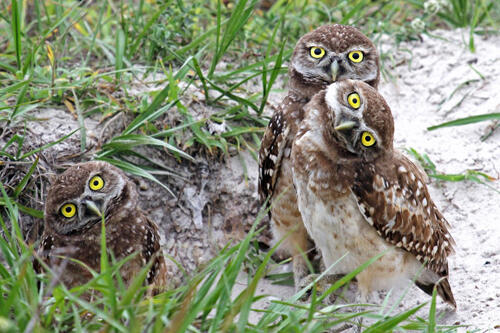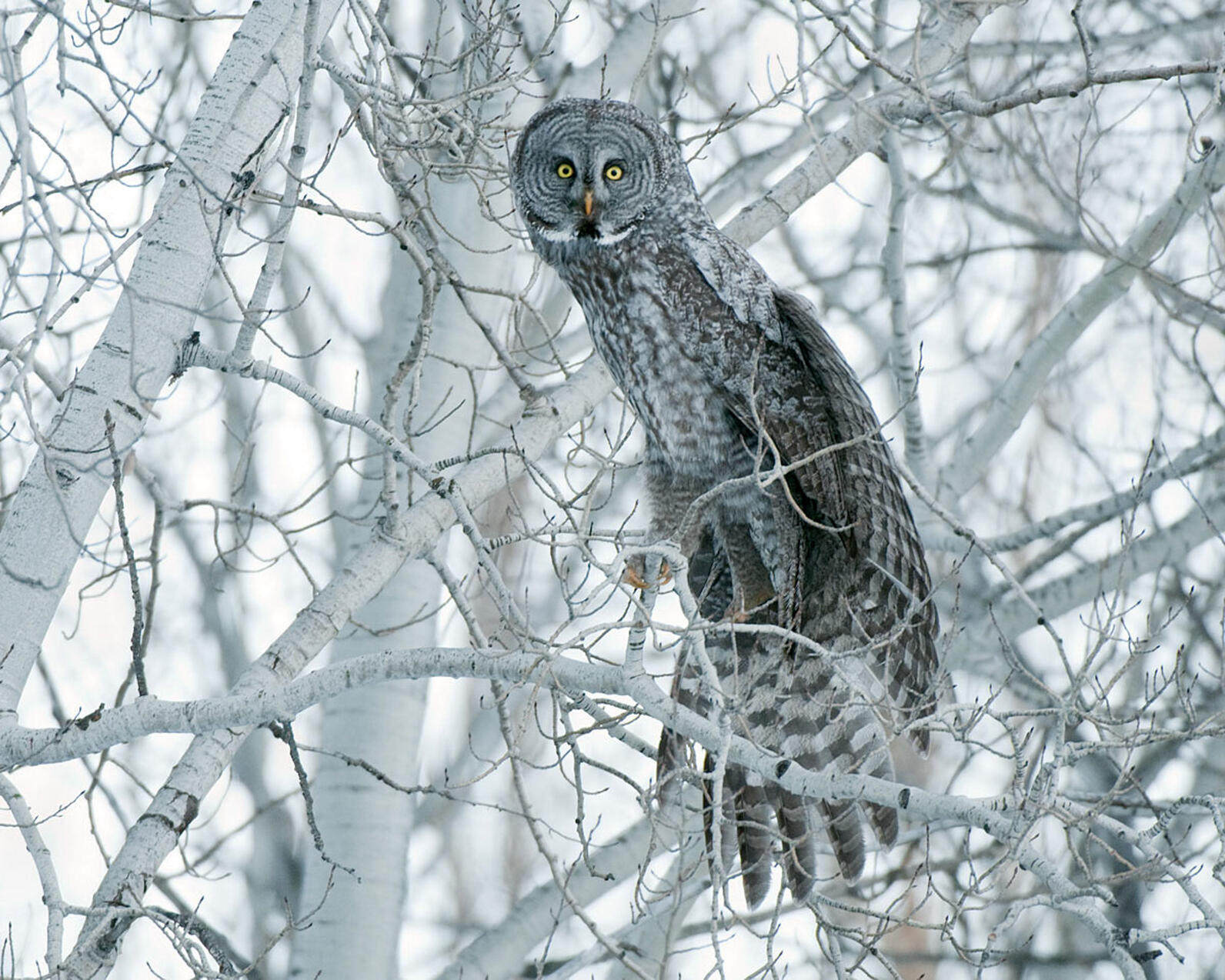Because California boasts such diverse habitat, we're lucky to host a lot of great owls here. If you spend any time outside camping or walking around, you're bound to come upon one, or more likely, hear one.
Anyway, we thought we'd throw together a quick list -- one that's by no means comprehensive, for sure. The three listed first -- the Great-horned Owl, the Barn Owl, and the Western Screech-owl are far and away the most common in the group. Here we go:
Great-horned Owl
Best just to get this one out of the way straight off. The Great-horned Owl is in many ways the quintessential owl. Picture an owl in your head, and you’ve probably imagined the Great-horned. It is a large, thick-bodied bird with large eyes, and two distinct tufts on its head. It is relatively common throughout California and North America. You can find this owl in all kinds of habitat – deserts, forests, meadows, wetlands, grasslands, even backyards. It is equally capable of attacking larger birds and mammals, as it is of smaller prey, such as mice or insects (photo by Michael Mees).
Barn Owl

With its distinctive white face, the Barn Owl is common throughout California, residing in lowlands, lightly forested foothills, even in residential neighborhoods. Indeed, one of the strengths of the owl is its versatility. It can live in barns, holes in cliff sides, trees, or man-made boxes. The predilection to eat rodents makes them popular to farmers and ranchers. A single pair feeding young can catch up to 70 pounds of rodents, especially voles, during the breeding season. It is one of the best studied raptors, and what we’ve learned is fascinating. For instance, the Barn Owl has amazingly keen hearing that can detect the sound of prey under snow, leaves, or grass. Its ears are slightly offset, which is thought to aid the bird in localizing its prey at night. Studies have shown that the Barn Owl is able to catch prey in zero light, depending entirely on its sense of hearing.
Western Screech-owl

The Western Screech-owl is also very common in California and west of the Rockies. It’s not a particularly big bird – it maxes out at about 10 inches in height. But like most owls, it’s tough, and is known to attack prey larger than itself, including ducks and medium-sized mammals. It can be found in a lot of habitats, but prefers forests along rivers.
Burrowing Owl

Burrowing Owls inhabit dry open areas in most of California, and the Western Hemisphere for that matter. Smaller than a lot of owls, an adult Burrowing Owl can stand about 10 inches tall. As the name suggests, Burrowing Owls are noteworthy because they mostly nest in holes in the ground, as opposed to trees. There has been a great amount of debate over the conservation status of the Burrowing Owl in California. While it is not considered threatened, there has been a push in recent years by conservation organizations to convince the State of California to list it as Threatened or Endangered. There is no question that the significant declines of specific local populations are worrisome, and that the bird faces a number of substantial threats. Burrowing Owls nest on landscapes that are often sought after for agricultural purposes, and their burrows are considered incompatible for that type of land use. Moreover, residential and commercial development has further reduced opportunities for burrowing sites and hunting habitat.
Great Grey Owl

The Great Gray Owl is arguably California’s most fascinating owl, but it is also probably its least understood. Among the world’s tallest owls, the Great Gray Owls dazzling gray feathering and yellow eyes have earned it a variety of nicknames, including the Great Gray Ghost, the Phantom of the North, and the Spectral Owl. Once you see one, you never forget it. While the Great Gray Owl (Strix nebulosa) occurs throughout the boreal zones of Canada and Alaska – extending southward into the Rocky Mountains and the Cascade Range of the United States – a small population struggles to persist in the central Sierra Nevada Mountains of California. The core of this population is centered in Yosemite National Park and the adjacent Stanislaus and Sierra National Forests. While ornithologists have long recognized only two subspecies of the Great Gray Owl in North America and Europe/Asia, new research indicates this Yosemite population has evolved in isolation for the last 25,000 years and is actually a distinct subspecies. There may be fewer than 200 Great Gray Owls in California. Because of these low numbers, and continuing human intrusion, the species was listed as an endangered species under the California Endangered Species Act in 1980.
Short-eared Owl
The Short-eared Owl is mostly a grassland bird, and it can be found all around the world, including California. It has a large round head and typically flies close to the ground. It can be as tall as 17 or 18 inches (photo by Greg Smith).
Northern Spotted Owl
The Northern Spotted Owl is something of a conservation legend, playing a huge role in the battle to save old growth forests in its range in the Pacific Northwest. While it’s a bird that is more commonly thought to occupy Washington and Oregon, we do get a good number here in California – as far south as Marin. Because of this species dramatic declines, it was listed as Threatened under the Endangered Species Act in 1990. The California Spotted Owl has been identified as a distinct subspecies (photo by USFWS).
Long-eared Owl
If you’re lucky enough to spot a Long-eared Owl, you won’t spend too much time wondering what it is. That’s because of its two prominent tufts that resemble ears. While some owls will get out during the day, the Long-eared Owl prefers to roost deep in trees while it’s light out and hunt at night. Like a few other owls listed here, this bird can hunt in complete darkness, relying solely on its sense of hearing. Its hoot is also fairly loud (photo by Sergey Yeliseev).
Northern Pygmy Owl
While we typically like to avoid describing birds this way, it’s really hard not to call the Northern Pygmy Owl cute. While it certainly has the heart of a raptor, it rarely grows taller than six or seven inches. It can typically be found in woodland thickets, waiting for something good to eat to walk or fly by (photo by David Mitchell).
Flammulated Owl
Another of the Very Small Owls is the Flammulated Owl. It lives in the mountain forests of the western United States and Mexico. It rarely gets over seven inches tall. Funny thing about this owl, it was once considered rare, but as we got better at looking for it, we realized that it's actually one of the more common owls in its particular range. And while owls are usually hard on the rodent populations, the Flammulated Owl is more of an insect eater. Go figure (photo by Jerry Oldenettel).
Northern Saw-whet Owl
Still another not-very-big owl is the Northern Saw-whet Owl, which lives in woodlands all across the Lower 48. It's a big fan of dense conifer trees, but will turn up in all kinds of strange places, including one's backyard. It's a very mellow bird, if one can actually say that about a bird, often preferring to sit still when it feels threatened. It survives mostly on mice, although it is usually too small to consume a mouse in one sitting.
Barred Owl
Back to the big owls for the last on our list. When we think of the Barred Owl, it's hard for us not to think about what a bad rap it's gotten here in California. Originally an eastern owl, the Barred Owl has discovered a love for old-growth forests and has pushed into the Pacific Northwest, where it often outcompetes the Endangered Northern Spotted Owl. So much so that one conservation proposal out there is to actually hunt the Barred Owl when it is in conflict. But the Barred Owl is really a great owl in its own right. It's got a great hoot ("Who cooks for you!"), and is strikingly beautiful.
Oh, we could go on. But that's a good list for now.




